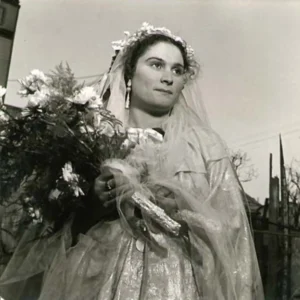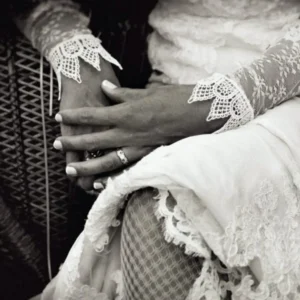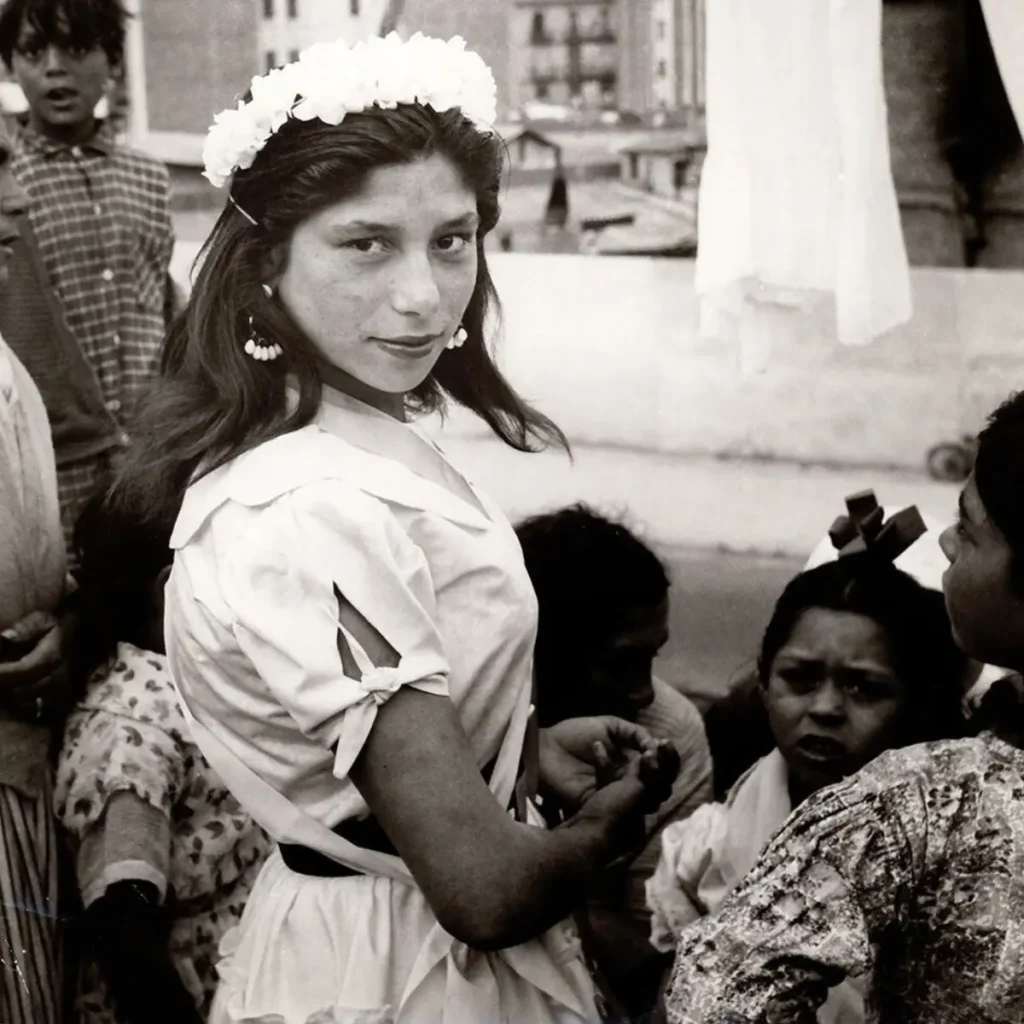One of the most renowned flamenco styles is the alboreá. It is a type of flamenco song linked to Gypsy weddings and is full of symbolism, respect and emotion. Many Gypsies consider that the alboreá should only be sung at wedding ceremonies, as singing it outside this celebration may attract “mal fario” (bad luck).
Since in our flamenco tablao the alboreá is one of the styles we use for our “Pure Flamenco” show, we have considered it important to try to explain well what it consists of.
If you want to know more about the alboreá, we tell you everything about it, its origin, structure, symbolism, and much more, don’t miss it.
What is the Alboreá?
The term alboreá comes from the mixture of “alboradas” (which are traditional dawn songs) and the word caló boreá, which means “to the bride”.
Its origin dates back to the city of Granada, but its influence has expanded to other cities such as Córdoba, Jaén, Seville or Cádiz.
This flamenco style was typically sung on the wedding morning, when the bride departed for her husband’s house.
It is a type of song that is performed in an intimate and family environment, being a song of farewell and blessing.
Within Gypsy culture, it is practically considered a sacred song that should not be sung outside its context.
In Granada, it became especially famous within the zambras of Sacromonte — with artists like María la Canastera.
In other provinces, it had adaptations to local rhythms such as bulerías, tangos or soleá por bulería.
There is a strong belief that the alboreá should not be sung outside the Gypsy wedding celebration.
In fact, Songs that were recorded by Rafael Romero (an artist nicknamed El Gallina) back in 1954 were heavily criticized by the Gypsy people and considered a cultural transgression.

Meter, Rhythm and Accompaniment of the Alboreá
Being a ceremonial and intimate type of style, it has a very poetic structure and musically it is very particular, which reinforces its ritual and solemn character.
Its peculiarities are reflected especially in its meter, the way of interpreting it and in the rhythm.
Meter of the Alboreá Verses
This song is normally formed by 4 heptasyllabic verses (that is, of seven metrical syllables each), and usually includes a chorus that is repeated throughout the song with melodic and symbolic objectives.
This simple and brief form of meter makes it easier to convey the emotional message more directly, full of poetry and meaning.
Example of structure:
The girl is leaving (7)
down the straight street (7)
her mother cries for her (7)
with her face covered (7)
Compass and Rhythm of the Alboreá
Regarding the compass of an alboreá, we can say that it has considerable flexibility, which gives the person interpreting it some freedom, especially in the first measures.
It usually starts more freely, with a more recited or melismatic vocal expression, and then the singing pattern becomes more defined.
Often, it has a 12-beat compass, similar to that of the soleá por bulería, and other times it is interpreted over a 6-beat compass, which gives it a more softened and measured touch.
This rhythmic flexibility allows the song to adapt to the emotional and ceremonial moment of the Gypsy wedding, reinforcing its sacred nature.
Accompaniment of the Alboreá
An alboreá can be interpreted in various ways depending on the accompaniment:
- Sung a capella, very common when seeking to highlight the emotion and solemnity of the event.
- Accompanied by flamenco guitar, which provides a harmonic touch to embellish the melody of the male or female singer.
- Accompanied by clapping, or the echo of knuckles on a table or chair, increasing the connection with its roots, this is the most traditional form.
These discreet accompaniments increase the sentiment and intimate character of the alboreá, which is not a performance, but practically a ceremonial ritual.
Symbolic and Spiritual Meaning

- Symbol of female transformation: The alboreá represents the transition from girl to woman, from living in the father’s home to living with the husband. It represents the farewell to childhood and at the same time the beginning of her new life as a wife, it is a transition ritual.
- Song of blessing: The alboreá is also more than a song full of art, it is a prayer that blesses the bride. In it, the bride is usually wished happiness, fertility, and luck in her new life.
- Presence of the sacred: In the sacred realm, an alboreá is considered an “initiatory rite”. It is often thought that an alboreá has the ability to “call upon the ancestors”, hence the belief that it should not be sung as entertainment or a performance.
Traditional Lyrics and Themes
The lyrics of an alboreá are usually related to love, purity, family, farewell to the mother, or good wishes for the marriage.
Example of traditional lyrics:
Now the beautiful bride departs,
now she goes with her handkerchief,
may the Virgin bless her
and light her path.
Historical Performers and Important Recordings
- María la Canastera: She is a female singer closely linked to the singing of the alboreá within the zambras of Sacromonte. Her way of singing it is considered an almost anthropological testimony.
- Rafael Romero “El Gallina”: This singer was quite controversial, as he was one of the few artists who dared to record alboreás, for which he was heavily criticized. In fact, his recordings are among the few alboreás that we can find in audio.
- La Paquera de Jerez, Carmen Amaya and others: Some of these cited artists have sung it occasionally, but always with respect for tradition.
The Alboreá Today
- Restricted use: To this day, the alboreá has maintained its tradition and is a flamenco style that is usually only sung at gypsy weddings. Its public performance is not well-regarded in gypsy culture.
- Cultural rescue: Although its singing is very limited, some research and compilation work has been done to prevent it from being lost, especially in ethnomusicological archives.
- Presence in cinema or theater: Some directors have included alboreá in films or theatrical representations dealing with gypsy weddings, but this is also quite controversial.

Comparison with other Ceremonial Styles
- Difference from the saeta or lullaby: We can say that it differs from other emotional styles such as the saeta (religious) or the lullaby (maternal), the alboreá has an exclusive social function: to accompany the entry into marriage.
- Predominant female role: Although the alboreá can be interpreted by a man, it is more common for a woman to sing it—mother, sister, friend—which increases its intimate and matriarchal dimension.
The alboreá is a song full of symbolism and emotion with deep ancestral roots and must be respected: it is a ceremonial rite that is rarely heard outside the nuptial context.

